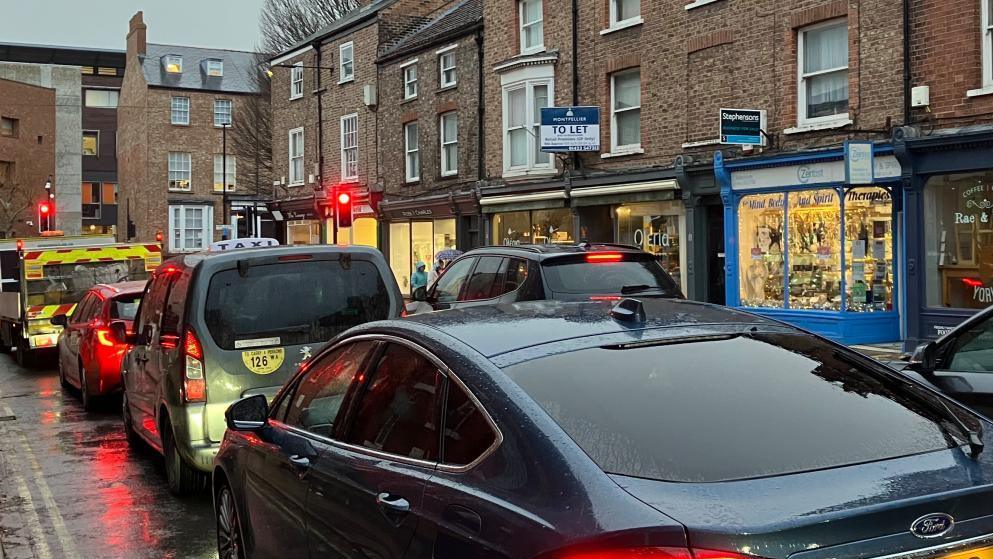City pollution falls below legal limit - report

Nitrogen dioxide levels around Gillygate in York fell 27% in 2024 when compared to the previous year
- Published
Recent air pollution levels at monitoring sites across York were all below legal limits for the first time since the pandemic, according to council data.
A City of York Council report found that 2024 nitrogen dioxide (NO2) emissions at the Gillygate and Bootham junction fell by 27% when compared to 2023, when it reached its highest recorded level of 43 micrograms per cubic metre of air (μg/m3).
Blossom Street near its junction with Queen Street had the highest recorded NO2 level at 32µg/m3 in 2024 - still falling below the 40µg/m3 legal limit.
The report described the findings as a "public health and environmental success".
It suggested grants given to taxi drivers to help buy low or zero emission cars had made a difference, along with phasing out fossil fuel-powered vehicles in the council's own fleet.
The report proposed that air quality management areas may be revoked in future years if the reductions continued, according to the Local Democracy Reporting Service.
It also found:
The highest maximum yearly mean concentration was recorded at the Blossom Street and Holgate Road junction, reaching 32.4µg/m3
It was followed by 31.1µg/m3 at the Gillygate and Bootham junction
Yearly average levels were down by 12% in Heworth Green and 8% in Holgate Road
Levels at Nunnery Lane, Fulford Road and Lawrence Street were down by 8%, 7% and 2% respectively
A 6% increase recorded at Fishergate is thought to be linked to a nearby construction site
"For the first time since the pandemic, all monitored locations meet legal NO2 limits," it said.
"Good air quality reduces absence from work and education due to air pollution related illnesses."
Get in touch
Tell us which stories we should cover in Yorkshire
Listen to highlights from North Yorkshire on BBC Sounds, catch up with the latest episode of Look North.
Related topics
Similar stories
- Published5 December 2024
